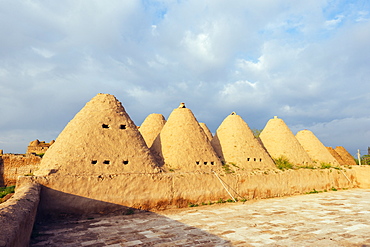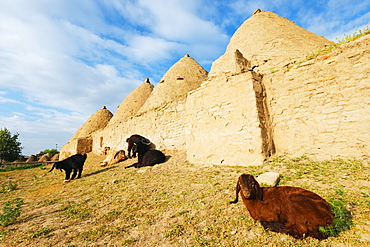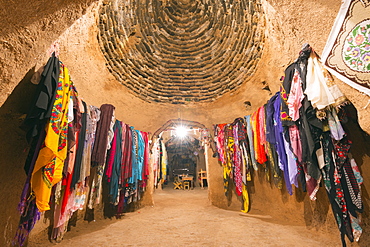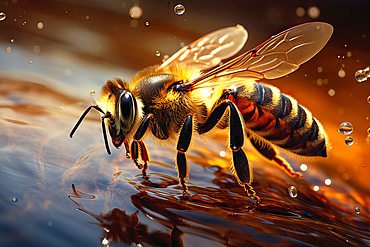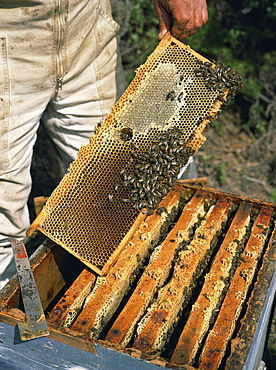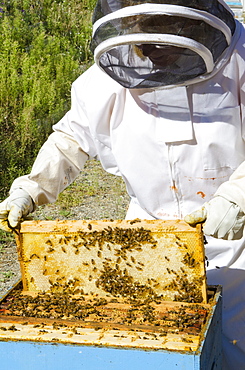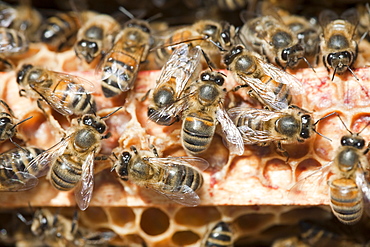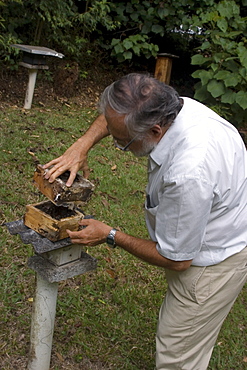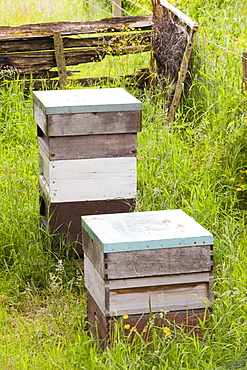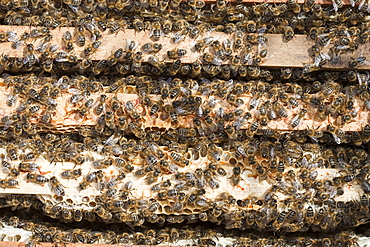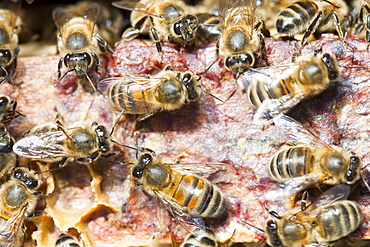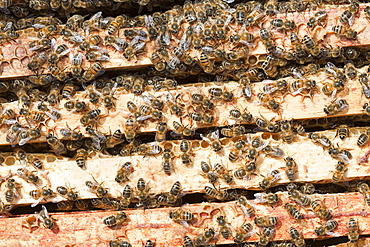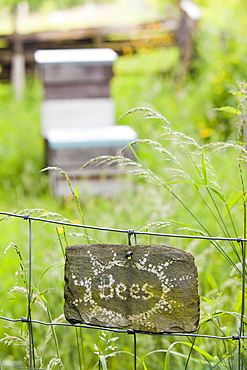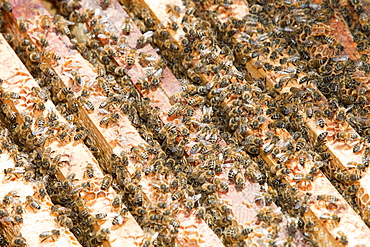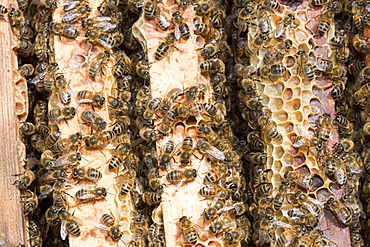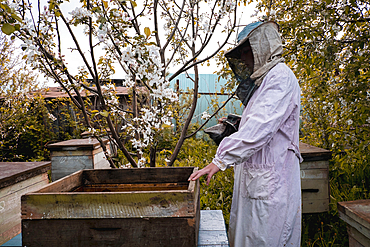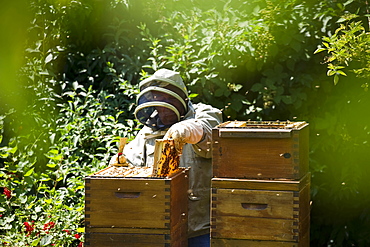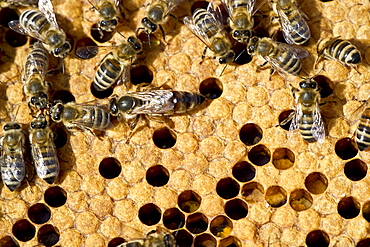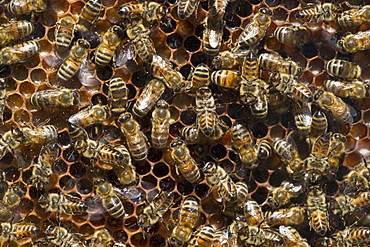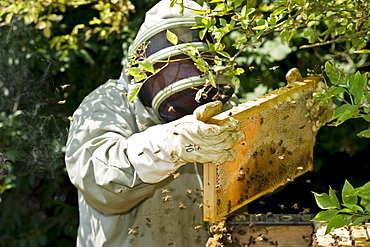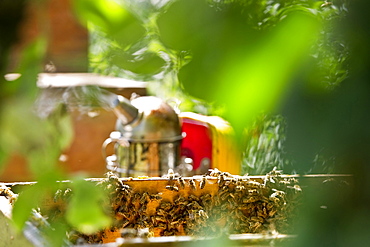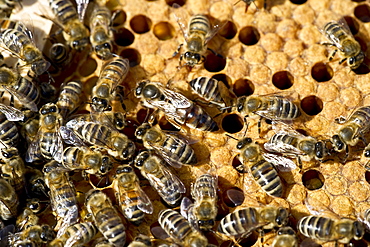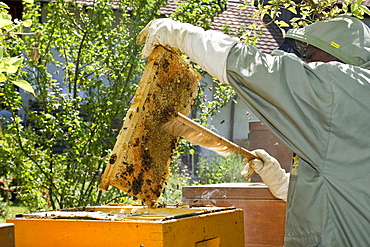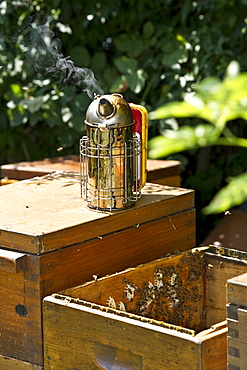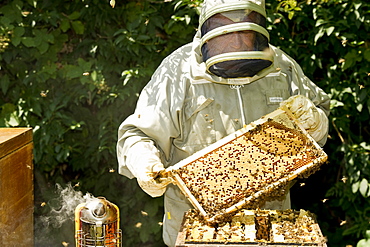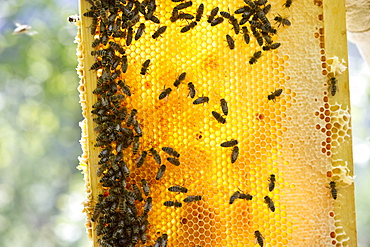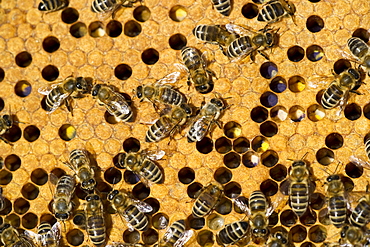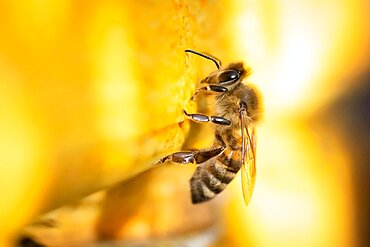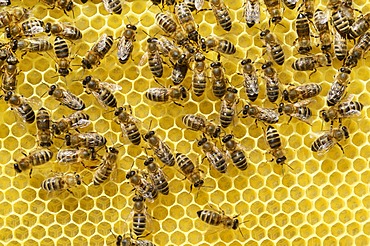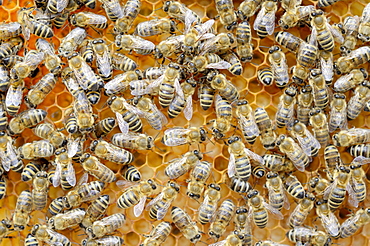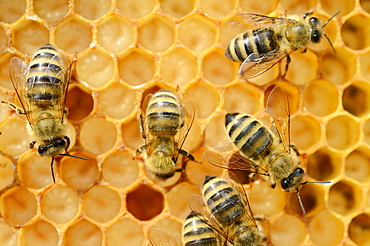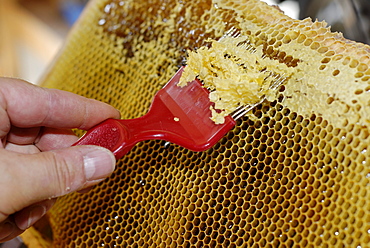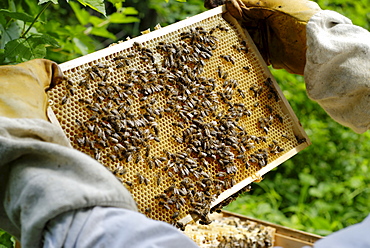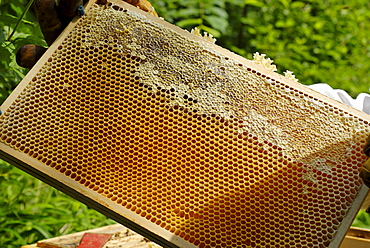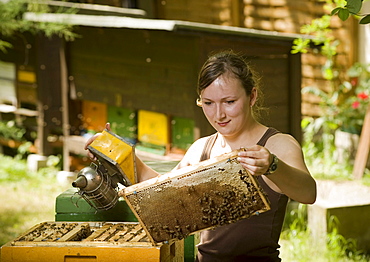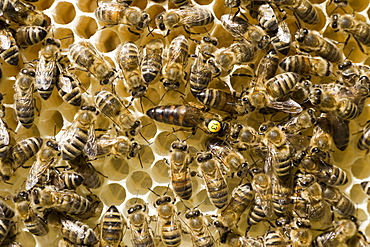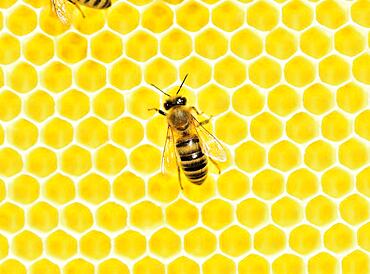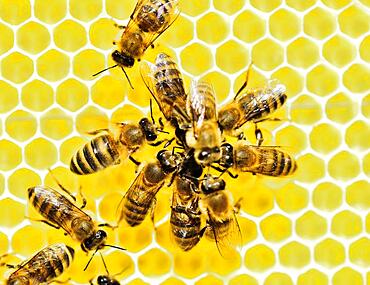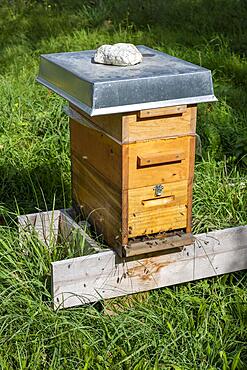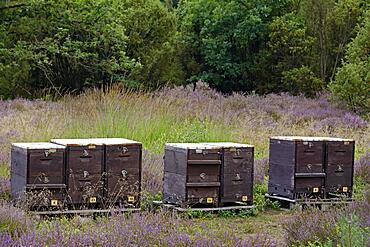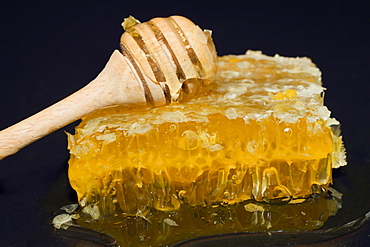Results
14 results found

The Charcoal Kilns, bee-hive structure, designed by Swiss engineers, built by Chinese labourers in 1879, Panamint range, Emigrant Canyon Road, Death Valley National Park, California, United States of America, North America
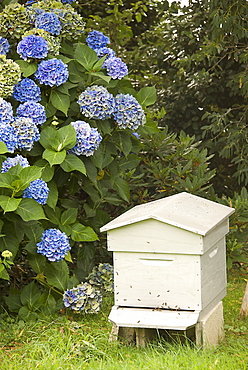
Bee hive and blue hydrangea, Botanical gardens of Chateau de Vauville, Cotentin, Normandy, France, Europe
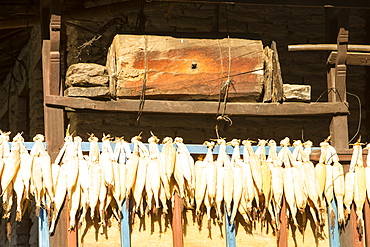
Maize drying for winter food and the traditional log bee hive of a subsistence farmer in the Annapurna Himalayas, Nepal, Asia
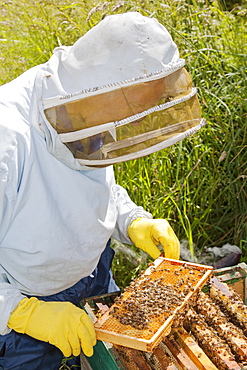
Beekeeper Bill Mackereth checks his hives for signs of Varoa mite damage, Cockermouth, Cumbria, England, United Kingdom, Europe

A bee with deformed wings as a result of attack by Varoa mites in a beehive in Cockermouth, Cumbria, England, United Kingdom, Europe
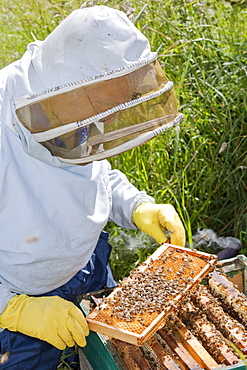
Beekeeper Bill Mackereth checks his hives for signs of Varoa mite damage, Cockermouth, Cumbria, England, United Kingdom, Europe

Stingless bee hive of Melipona bicolor at University of Vicosa, Vicosa, Minas Gerais, Brazil, South America

Beekeeper Bill Mackereth checks his hives for signs of Varoa mite damage, Cockermouth, Cumbria, England, United Kingdom, Europe
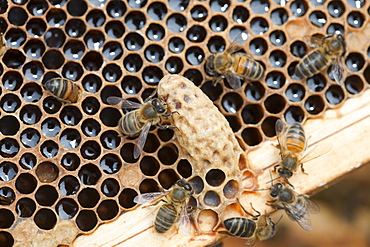
A queen cell in a beehive infected and damaged by the Varoa mite, Cockermouth, Cumbria, England, United Kingdom, Europe

A beehive infected and damaged by the Varoa mite, Cockermouth, Cumbria, England, United Kingdom, Europe
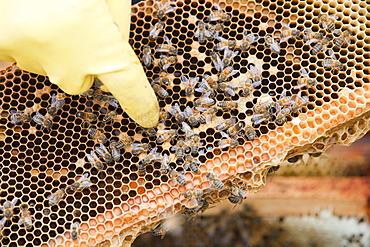
Beekeeper Bill Mackereth checks his hives for signs of Varoa mite damage, Cockermouth, Cumbria, England, United Kingdom, Europe

A bee with deformed wings as a result of attack by Varoa mites in a beehive in Cockermouth, Cumbria, England, United Kingdom, Europe
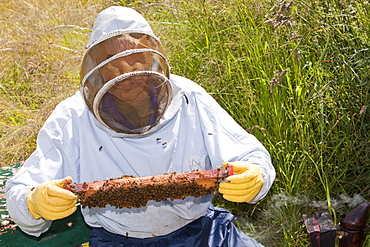
Beekeeper Bill Mackereth checks his hives for signs of Varoa mite damage, Cockermouth, Cumbria, England, United Kingdom, Europe
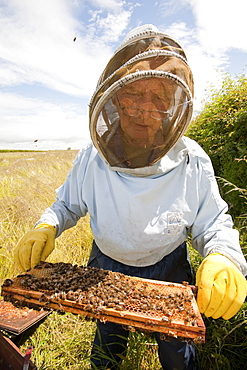
Beekeeper Bill Mackereth checks his hives for signs of Varoa mite damage, Cockermouth, Cumbria, England, United Kingdom, Europe
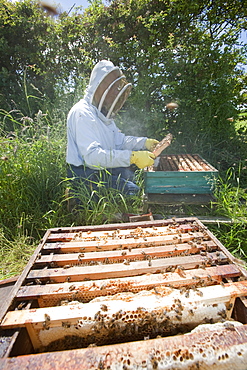
Beekeeper Bill Mackereth checks his hives for signs of Varoa mite damage, Cockermouth, Cumbria, England, United Kingdom, Europe
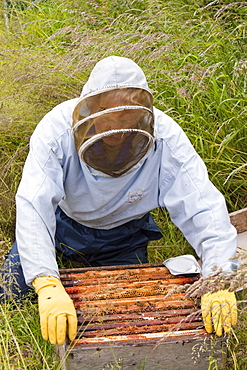
Beekeeper Bill Mackereth checks his hives for signs of Varoa mite damage, Cockermouth, Cumbria, England, United Kingdom, Europe
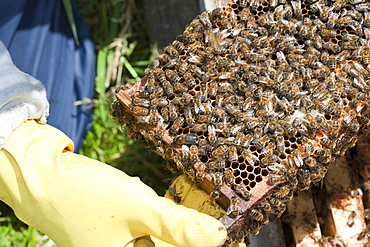
Beekeeper Bill Mackereth checks his hives for signs of Varoa mite damage, Cockermouth, Cumbria, England, United Kingdom, Europe
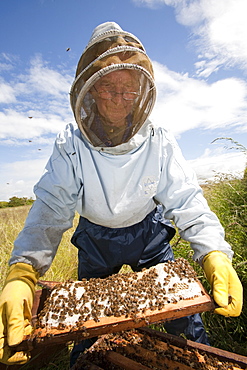
Beekeeper Bill Mackereth checks his hives for signs of Varoa mite damage, Cockermouth, Cumbria, England, United Kingdom, Europe
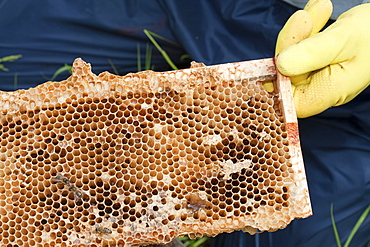
Beekeeper Bill Mackereth checks his hives for signs of Varoa mite damage, Cockermouth, Cumbria, England, United Kingdom, Europe
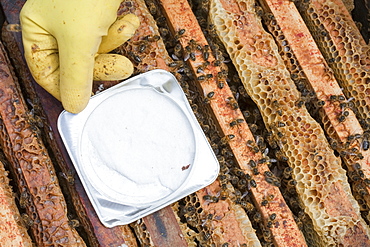
Apiguard being used to combat the Varroa mite in hives in Cockermouth Cumbria, England, United Kingdom, Europe

A beehive infected and damaged by the Varoa mite, Cockermouth, Cumbria, England, United Kingdom, Europe
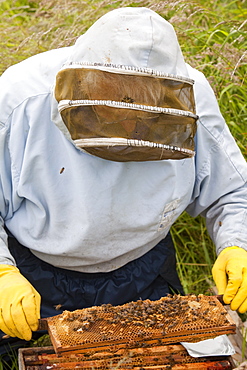
Beekeeper Bill Mackereth checks his hives for signs of Varoa mite damage, Cockermouth, Cumbria, England, United Kingdom, Europe
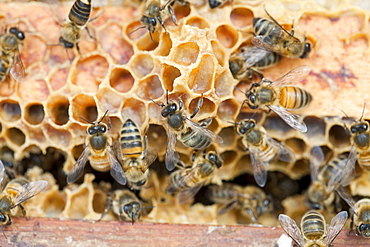
A beehive infected and damaged by the Varoa mite, Cockermouth, Cumbria, England, United Kingdom, Europe

Bee hive of Tetragonisca angustula at University of Vicosa, Vicosa, Minas Gerais, Brazil, South America

A beehive infected and damaged by the Varoa mite, Cockermouth, Cumbria, England, United Kingdom, Europe
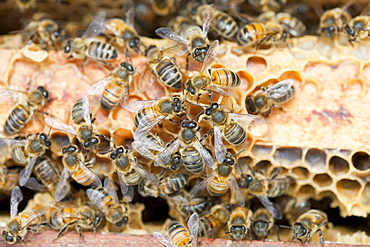
A beehive infected and damaged by the Varoa mite, Cockermouth, Cumbria, England, United Kingdom, Europe
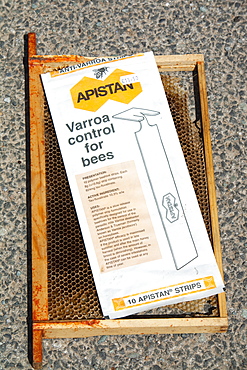
Apistan being used to combat the Varroa mite in hives in Cockermouth Cumbria England, United Kingdom, Europe
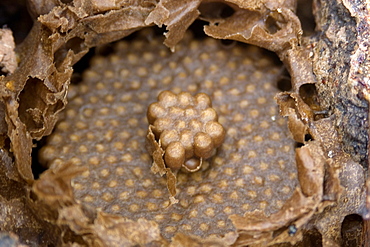
Stingless bee colony of Melipona bicolor at University of Vicosa, Vicosa, Minas Gerais, Brazil, South America
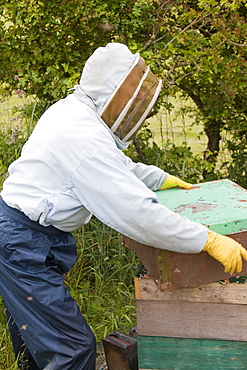
Beekeeper Bill Mackereth checks his hives for signs of Varoa mite damage, Cockermouth, Cumbria, England, United Kingdom, Europe
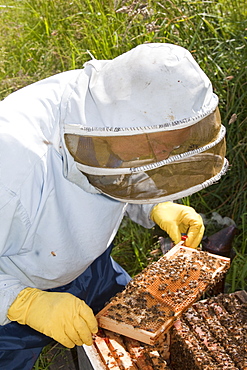
Beekeeper Bill Mackereth checks his hives for signs of Varoa mite damage, Cockermouth, Cumbria, England, United Kingdom, Europe

A beehive infected and damaged by the Varoa mite, Cockermouth, Cumbria, England, United Kingdom, Europe
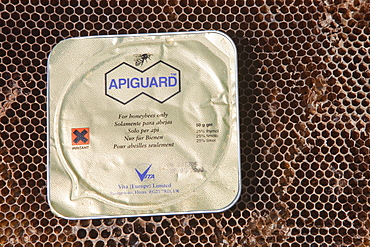
Apiguard being used to combat the Varroa mite in hives in Cockermouth Cumbria, England, United Kingdom, Europe

A beehive infected and damaged by the Varoa mite, Cockermouth, Cumbria, England, United Kingdom, Europe
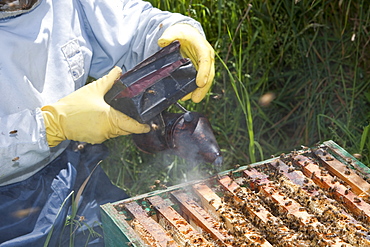
Beekeeper Bill Mackereth checks his hives for signs of Varoa mite damage, Cockermouth, Cumbria, England, United Kingdom, Europe

A beehive infected and damaged by the Varoa mite, Cockermouth, Cumbria, England, United Kingdom, Europe
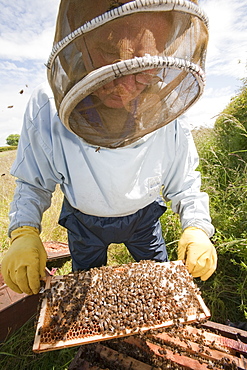
Beekeeper Bill Mackereth checks his hives for signs of Varoa mite damage, Cockermouth, Cumbria, England, United Kingdom, Europe
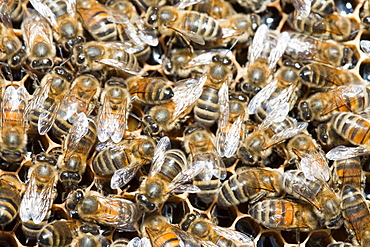
A beehive infected and damaged by the Varoa mite, Cockermouth, Cumbria, England, United Kingdom, Europe

A beehive infected and damaged by the Varoa mite, Cockermouth, Cumbria, England, United Kingdom, Europe
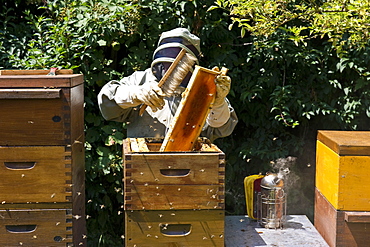
Beekeeper with smoker at wooden beehives, Freiburg im Breisgau, Black Forest, Baden-Wuerttemberg, Germany
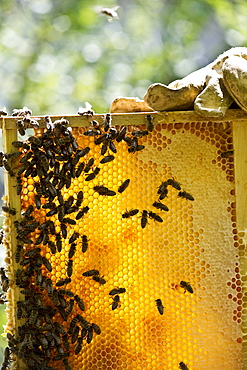
Beekeeper holding honeycombs with bees, Freiburg im Breisgau, Black Forest, Baden-Wuerttemberg, Germany
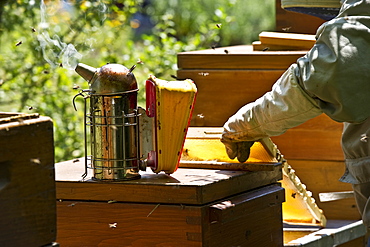
Beekeeper with smoker at wooden beehives, Freiburg im Breisgau, Black Forest, Baden-Wuerttemberg, Germany
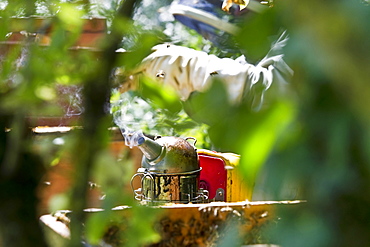
Beekeeper with smoker at wooden beehives, Freiburg im Breisgau, Black Forest, Baden-Wuerttemberg, Germany
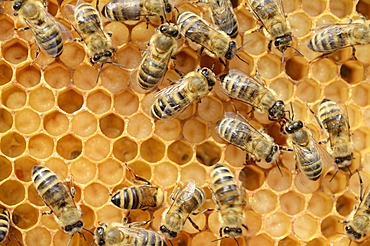
Honey bees (Apis mellifera), worker bees caring for the brood, on brood cells, larvae, circa 8 days, in honeycomb cells

Typical Mallorcan honeycombs, Panades de sobrassada, Forn de Can Pomar. Campos, Mallorca. Balearic Islands. Spain.

Blagoevgrad, Bulgaria - February 10, 2019: Worshippers light candles on jars with honey during a religious ritual marking the day of Saint Haralampi - the Orthodox patron saint of beekeepers - in the church of the Presentation of the Blessed Virgin
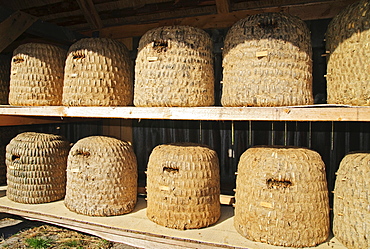
Woven beehives in a traditional bee fence near Undeloh, Lueneburg Heath Nature Park, Lower Saxony, Germany, Europe

Bee hive, the entry hole for the bees is the mouth of a carved face, left a caricature of George Bush
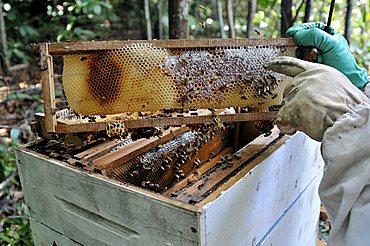
Beekeeper showing honeycomb, beekeeping in the Amazon rain forest is part of agricultural activity in a settlement of formerly landless peasants, land reform, Entre Rios Province, Mato Grosso, Brazil, South America
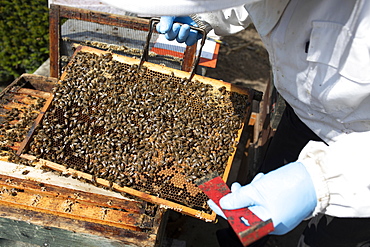
Beekeeper with protective suit controls honeyBees (Apis) on the comb on the stock, North Rhine-Westphalia, Germany, Europe
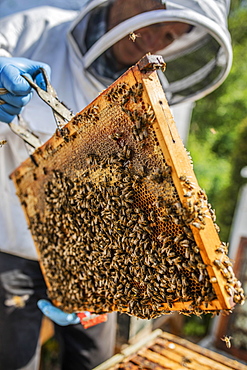
Beekeeper with protective suit checks his honeyBees (Apis) ian der Wabe, North Rhine-Westphalia, Germany, Europe
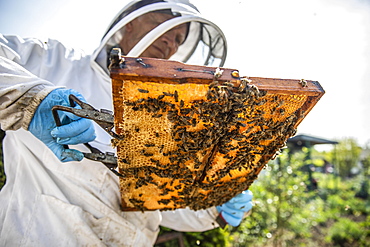
Beekeeper with protective suit checks his honeyBees (Apis) ian der Wabe, North Rhine-Westphalia, Germany, Europe

